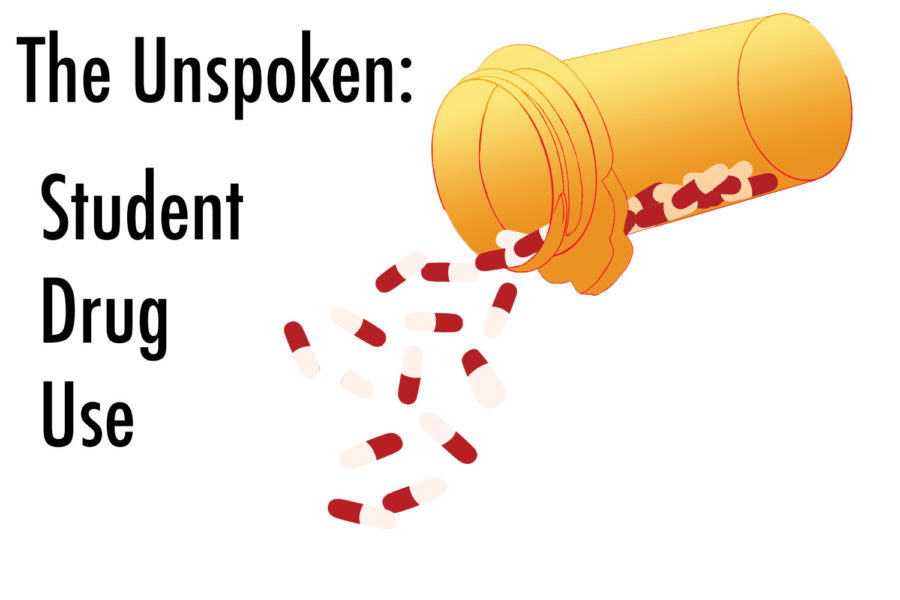It’s an unspoken truth that a portion of the student body at Akins High School has abused some kind of drug. The same is true for every other high school across the country and likely the world.
For all of the typical reasons, some Akins students have chosen to try a drug at some point in their life. Based on an online survey conducted by The Eagle’s Eye between Jan. 26 and Feb. 7, 37 percent of the 100 students who responded said they have used an illegal drug.
At the same time, 62 percent of students responded that they know someone who has abused an illegal or prescription drug. That could include people who do not attend Akins, including family members. The Eagle’s Eye survey results were not scientifically collected, but 53 percent of the respondents said they believe student drug use is a problem at Akins.
According to the survey results, the most common drug used by Akins students is marijuana with 36 percent of drug users saying they have tried it.
“Smoking [marijuana] allows me to be myself and not be stressed out all the time about basically everything — also to help me with my anxiety and depression,” said senior Alex White, which is an alias to protect his identity. “It helps me stay calm and not succumb to the bad thoughts that both anxiety and depression make me think.”
In The Eagle’s Eye survey 18 percent responded that the primary reason they use illegal substances is to provide a relaxing and stress relieving experience. Another 17 percent said they use drugs to treat depression and anxiety. Forensics teacher Christina Jenschke explains that drugs affect the human body in adverse ways.
“(Drugs) are highly effective on the human body especially a growing kid, an adolescent body…” Jenschke said. “There are some studies that show that certain brain development is affected with recreational users of marijuana especially at a young age.”
Carl Lupica, who studies drug addiction at the National Institute on Drug Abuse, said in an article published by the Society of Neuroscience that marijuana use can have long lasting effects on adolescents.
“This study suggests that even light to moderate recreational marijuana use can cause changes in brain anatomy,” he said. Jenschke said that some information about marijuana use is misinterpreted by young users.
“You have the passage of legalization of marijuana in 20 states now and Texas even has medicinal usage,” she said. “But I think the kids see that as an OK still to use it. Little do they know it’s still illegal (in Texas). And it still has effects on their brain development.”
The Eagle’s Eye survey accepted anonymous responses from participants about the impact of drugs in their lives. The open responses show that their drug use experiences don’t always have positive outcomes.
One commentator said “I came really close to dying when I was doing coke.” Another said drugs “ literally ruined so much of my life. (It’s) time I can’t get back, people I can’t get back. It destroyed a big part of me in the sense that it took over my life for a while.”
The survey revealed that many students are exposed to drug culture through their own family members.
“My dad OD’d on cocaine when I was five and almost caused my mom to divorce him,” one student said in the survey.
It’s not uncommon for students to be exposed to drugs at home rather than being peer pressured at school.
Freshman Jessica Guzman, which is an alias, knows the culture of using and selling drugs.
“I’ve sold acid, weed, and shrooms … I smoke weed and take shrooms sometimes,” Guzman said.
Guzman disclosed that she currently sells acid to provide a source of income for herself. Guzman’s initial encounter with drugs was two years ago.
“[My mother] kept weed in her bedroom and I asked about it and she explained what it was. Eventually, I took some … and I’ve been smoking ever since,” Guzman said.
When Akins is compared nationally, the volume of use is similar. A database from “Monitoring the Future,” which surveys students scientifically every year, shows that the lower percentage of illicit drug use holds steady for more hardcore drugs such as cocaine and crack, among others. Further, Akins continues to follow commonalities with a significant number of marijuana users.
Although students often learn about drug use outside of school, many did report receiving information about drugs from Akins faculty and staff. Of the students who responded to The Eagle’s Eye survey, 37 percent reported receiving information about drugs in their health classes, 15 percent from science classes and 14 percent from physical education classes.
These findings suggest that schools have a large role to play in teaching students about the dangers and consequences of drug use.


